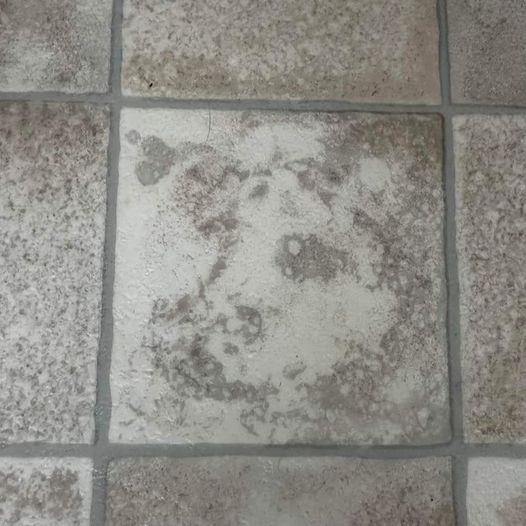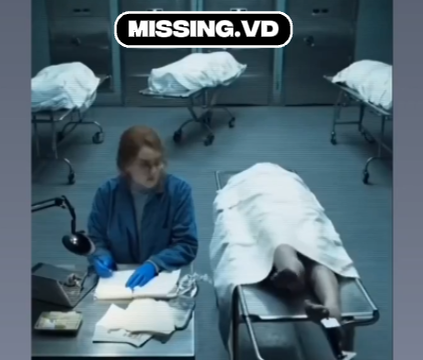In the realms of psychology and visual perception, there’s a fascinating phenomenon where we often spot familiar shapes, particularly faces, in random objects or patterns. This intriguing occurrence is known as pareidolia, and it’s demonstrated perfectly in the image above. At first glance, it appears to be an ordinary tile floor, but upon closer inspection, it reveals something more curious—a faint image of a face.

What is Pareidolia?
Pareidolia occurs when our brains interpret random stimuli, like shapes, patterns, or even sounds, as something recognizable—often taking the form of faces or figures. It’s why we might see animals in the clouds, faces in the moon, or, in this instance, a ghostly face in a worn floor tile.
Our brains are wired to recognize faces, an evolutionary trait that dates back to our early survival needs. Spotting a friend, foe, or potential danger from afar was crucial for early humans, and this instinct became deeply ingrained in our neural networks. As a result, we tend to perceive faces even when only a vague resemblance is present—our minds fill in the blanks, turning abstract patterns into recognizable forms.
The Face in the Tile: A Closer Examination
The image of the tile, upon closer inspection, appears to have the faint outline of a face. The rough texture and wear of the tile give rise to features like “eyes,” represented by dark spots, a “nose,” formed by a central smudge, and a “mouth,” created by a faint curve. The face seems ghostly, as though a hidden character is peeking out from the inanimate object, waiting to be noticed.
@zoebreadtok i will regret this design. it takes a very long time. #pareidolia #faces #people ♬ Minor Swing – Swing of France
This example of pareidolia transforms an otherwise ordinary object into something mysterious and unexpected. For some viewers, the face might evoke a sense of wonder, while for others, it could even be a little eerie, as if the inanimate world around us is alive with hidden personalities. Regardless of the reaction, this phenomenon invites us to pause and look closer, uncovering the whimsical potential of everyday objects.
Why Do We See Faces in Everything?
Seeing faces in inanimate objects isn’t unusual and isn’t limited to floor tiles or walls. This tendency is rooted in our evolutionary need for social connection and survival. Being able to quickly identify faces allowed early humans to recognize allies or threats and respond accordingly. Over time, this ability became fine-tuned, enabling us to detect facial cues with remarkable speed, even when the resemblance is minimal.
Neuroscientists suggest that the tendency to see faces not only aided survival but also played a significant role in understanding emotions and social interactions. It’s a mechanism that helps us interpret expressions, gauge intentions, and navigate complex social situations. Our brain’s capacity to recognize faces, even in random shapes, showcases its incredible ability to make sense of the world—even if that sense is sometimes more in our minds than in reality.
Pareidolia as an Art Form
Beyond its scientific explanation, pareidolia also has a deeply artistic side. Many artists have drawn inspiration from this phenomenon, finding hidden images in nature, architecture, and everyday objects. This art form encourages viewers to look beyond the obvious, inviting them to find beauty in the unexpected. Whether it’s a face in the grain of wood, a figure in the clouds, or a creature formed by shadows, pareidolia transforms the mundane into moments of imaginative discovery.
The “face” in the tile could even be considered a form of accidental art—a masterpiece created not by design but by chance. It’s a reminder that art doesn’t always need to be intentional. Sometimes, it’s about seeing the world with a creative eye and finding the extraordinary within the ordinary.
Finding Magic in the Mundane
Pareidolia is more than just a mind trick—it’s a way our brains seek familiarity and meaning in everyday life. It allows us to turn ordinary scenes into whimsical experiences, finding faces where none were intended. This phenomenon illustrates how our perception is shaped by our mind’s natural curiosity, constantly interpreting and redefining the world around us.
Conclusion
The next time you’re walking across a tiled floor, gazing at a cloud-filled sky, or staring at a textured wall, take a moment to look closer. You might just find a face looking back at you. Pareidolia reveals the brain’s unique way of interpreting random stimuli, transforming the mundane into moments of wonder. Whether it’s a mysterious figure in a tree’s bark or a friendly face formed by shadows, these discoveries remind us of the magic hidden within the everyday world. It’s a small but meaningful reminder of how we can find unexpected joy in even the most ordinary of places.





